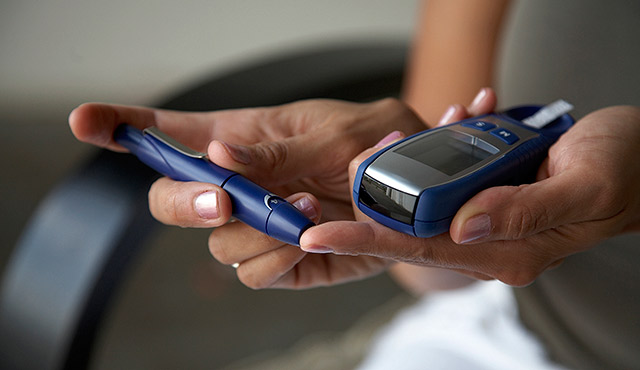Genetics can play a part in who develops Type 2 diabetes, but this is one disease that can be prevented, primarily by regular exercise and healthy eating habits. (Type 1 diabetes is considered an autoimmune disease and is usually diagnosed in children or young people.)
“Having a genetic tendency, being overweight or obese, having a sedentary lifestyle and not being physically active on a regular basis are major risk factors for the development of Type 2 diabetes which is the most common type,” says Serhat Aytug, MD, FACE, an endocrinologist at St. Jude Heritage Medical Group in Fullerton, in discussing why some people develop the disease.
But once a person has been diagnosed with Type 2 diabetes, becoming more active and making diet changes also helps limit its damage to health.
In most people, the hormone insulin helps their bodies to absorb glucose from food so that it can be used for energy. But for Type 2 diabetes sufferers, their bodies are not making enough insulin to effectively absorb that glucose. If left untreated, the excess glucose can damage nerve and muscles to the point where heart disease, stroke, blindness, kidney disease, and the need for limb amputations can develop.
If Type 2 diabetes is diagnosed early, via regular checkups and blood tests, it can be controlled with a doctor’s supervision. The American Diabetes Association recommends that adults age 45 and older or who are overweight or obese be tested for diabetes. “The whole point is to prevent complications,” says Dr. Aytug.
The exercise factor
Regular physical activity can improve blood glucose control and prevent or delay Type 2 diabetes, according to a joint statement from the American Diabetes Association and the American College of Sports Medicine. Both aerobic exercise and resistance training help improve insulin function.
People with diabetes must check with their doctors before starting an exercise routine. According to the Mayo Clinic, blood sugar levels should be tested before, during and after exercising to prevent dangerous blood sugar level fluctuations when taking diabetes medications, particularly insulin. The goal is to become more active and lose weight.
What helps people get moving? Goal setting, social support and counseling from doctors, according the joint statement. The general recommendation for exercise is a minimum of 2 hours per week of moderately intense workouts such as bicycling, swimming, or fast walking.
Medications
New treatments have been developed for diabetes patients in recent years, according to Dr. Aytug. “Some are very sophisticated—they won’t work until blood sugar is high,” he says. “They help the intestines to produce the hormone GLP1 which helps the pancreas to produce insulin. They also block the hormone glucagon, which makes the blood sugar go high.”
Medformin is an oral medication that is often given to Type 2 diabetes patients to help control blood sugar levels and thus ward off the common health consequences of high blood sugar.
Doctors may recommend that certain patients take insulin sooner rather than later; for other patients, insulin will be recommended when other medications cease being effective. But this doesn’t always mean that the disease has progressed.
“Sometimes it’s good to start taking insulin earlier,” says Dr. Aytug. “It depends on patient—for some very old patients who have to do the injections themselves, it’s very hard.” He adds that doctors often work closely with diabetes patients to make sure their treatment is effective.
Foods to eat, foods to avoid
As anyone with Type 2 diabetes knows, food intake has to be monitored. “Eating vegetables and nuts, fiber, and healthy proteins such as fish is good, while cutting down on red meat, saturated fat and carbohydrates, and minimizing calories,” is the way to go, says Dr. Aytug.
In addition to sugar control, it is extremely important to control the blood pressure, cholesterol and triglycerides in a patient with diabetes to prevent heart attacks, strokes, and circulation problems, he says. Routine check-ups with an eye doctor and podiatrist are also recommended.
“Type 2 can be managed in the early years after diagnosis with diet, exercise and weight loss,” says Dr. Aytug. “I’m just there to help patients learn how can we make this better.” He adds, “For some individuals it’s easy—they bike four hours a day. For others, particularly the obese and the elderly who can be sedentary and have arthritis, hip problems and back problems, it’s hard. But you come up with a plan that works with each individual—it’s not one size fits all.”

